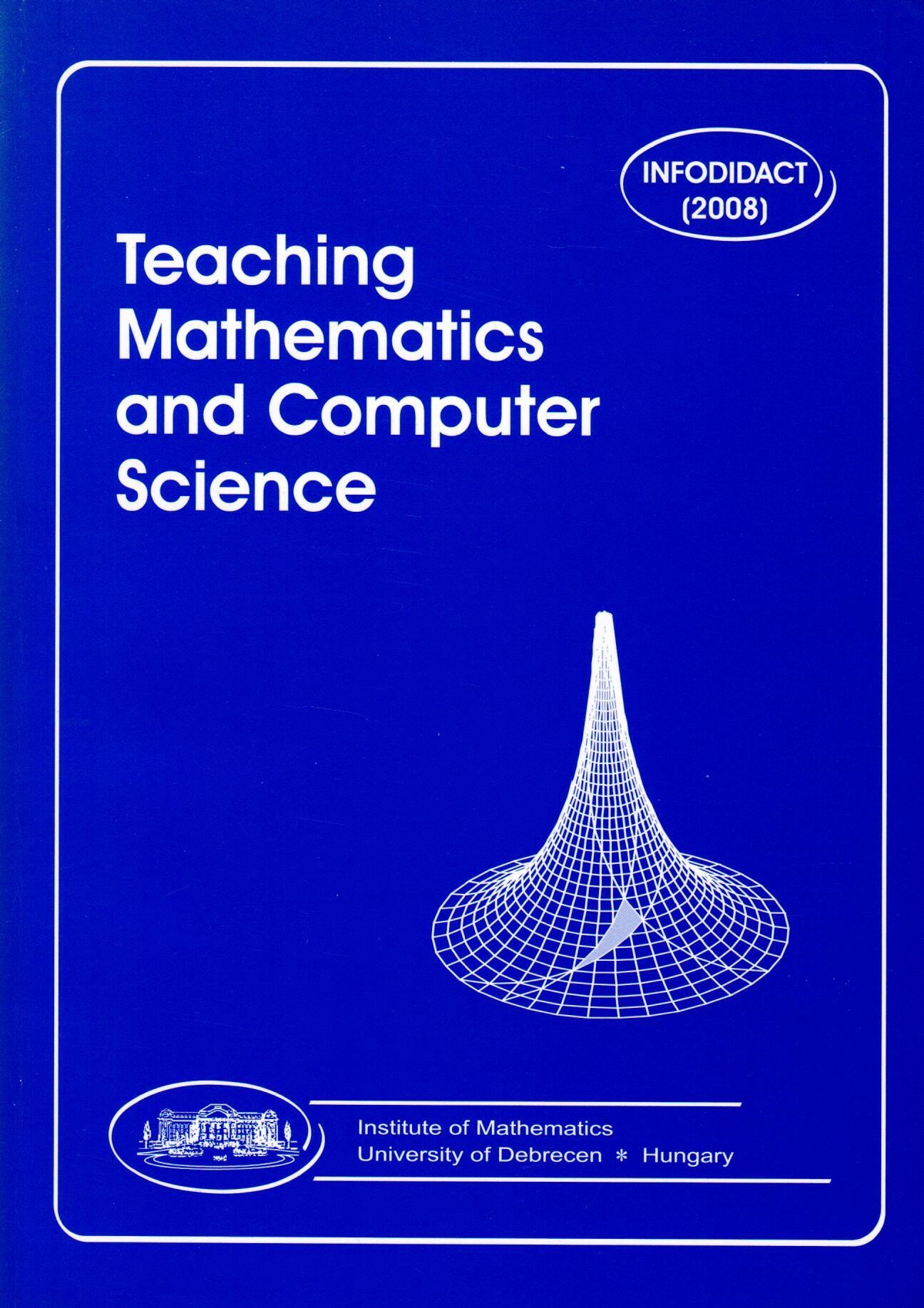Vol. 6 No. ID (2008)
Published
2008 December 31
##issue.tableOfContents##
Articles
-
Report on INFODIDACT 2008 - the First National Conference on Didactics of Informatics: 11-12 April, 2008, Szombathely, Hungary
1-2Views:78Acquiring a PhD in any subject has been possible only in the last twentish years in Hungary. To take degree in didactics, especially didactics of informatics is still very difficult. There are not enough forums for the PhD students where they could report of their research work and results.PDF34 -
ICT methodology
3-24Views:124This article is an overview discussing what ICT subject methodology, ICT didactics and ICT methodology are, what the philosophy of ICT is, and finally what ICT pedagogy is.PDF45 -
The single-source shortest paths algorithms and the dynamic programming
25-35Views:133In this paper we are going to present a teaching—learning method that help students look at three single-source shortest paths graph-algorithms from a so called "upperview": the algorithm based on the topological order of the nodes, the Dijkstra algorithm, the Bellman-Ford algorithm. The goal of the suggested method is, beyond the presentation of the algorithms, to offer the students a view that reveals them the basic and even the slight principal differences and similarities between the strategies. In order to succeed in this object, teachers should present the mentioned algorithms as cousin dynamic programming strategies.PDF55 -
Algorithmics of the knapsack type tasks
37-71Views:112We propose a new kind of approach of the teaching of knapsack type problems in the classroom. We will remind you the context of the general knapsack-task and we will classify it, including the two most popular task variants: the discrete and the continuous one. Once we briefly present the solving algorithm of the continuous variant, we will focus on the solving of the discrete task, and we will determine the complexity of the algorithms, looking for different optimizing possibilities. All these issues are presented in a useful way for highschool teachers, who are preparing students in order to participate in different programming contests.PDF33 -
Organizing programming contests
73-99Views:85This paper aims to summarize my experience in organizing programming contests. It is an overview of those questions that should be raised and decisions that should be made by organizers, teachers and computer system administrators, who participate "on the other side" of such events.PDF38 -
GeoGebra in mathematics teaching
101-110Views:147GeoGebra is a dynamic mathematics software which combines dynamic geometry and computer algebra systems into an easy-to-use package. Its marvel lies in the fact that it offers both the geometrical and algebraic representation of each mathematical object (points, lines etc.). The present article gives a sample of the potential uses of GeoGebra for mathematics teaching in secondary schools.PDF42 -
Expressiveness of programming languages and environments: a comparative study
111-141Views:117In written and oral communication tools, the support of the understanding of our message have an important role: we can increase the expressiveness and the level of understanding of our topic by approaching it in several ways, i.e. in written methods by highlighting the important parts; in oral by changing tone and other elements of non-verbal communication. In this paper programming languages and developing environments are compared with each other in terms of their methods and their level of support to the solution of programming tasks.
There is a need to have these tools in programming and, of course, in teaching programming. What are the factors that define the distinctness and the legibility of a program? What are the basic principles which give an instrument in programmers' and students' hands in order to create a properly working program from already existing algorithms in the most efficient way? We search for the answers to these questions in this paper.PDF36
Keywords
Issues by Year
2020
2017
2011
2010
2009
2007
2006
2005
2004
2003







